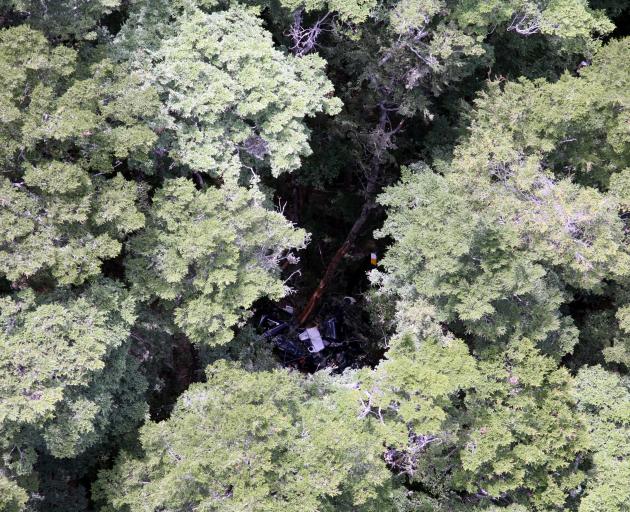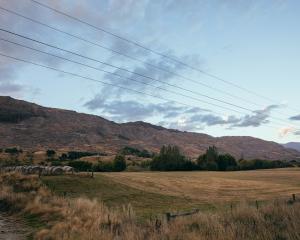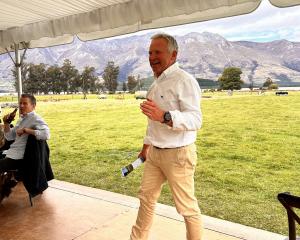
Over The Top pilot instructor Mr Combe (42) and student pilot Mr Patterson Gardner (18) died on February 19, 2015, after the four-seater aircraft, ZK-IPY, a Robinson 44 helicopter, broke up in mid-air over the Lochy Valley, near Queenstown.
Evidence suggests the accident occurred after a low-g event, followed by rotor blade divergence, where the main rotor blades diverge from their normal plane of rotation, and mast bumping.
A low-G event can cause the heicopter to roll rapidly to the right, causing high stress at the connection between its mast and the rotor blade disc. Pilots may have less than a second to respond to prevent rotor blade divergence.
Expert witness Andrew McGregor has said the cause of blade divergence has not been determined with confidence.
He has suggested one cause could have been an abrupt gust of wind surprising the pilots during otherwise good flying conditions.
Robinson Helicopter Company has not participated in the inquest.
During the inquest, witnesses have highlighted New Zealand industry concerns about aspects of Robinson design.
Yesterday’s evidence came from Over The Top flight instructor and flight examiner James Forward, before Mr McGregor was recalled for cross-examination on Wednesday’s evidence.
Mr McGregor was given seven days to provide more information about the use of simulators for helicopter pilot training and to find photos of damage reported by his colleague, helicopter specialist Tom McCready, during an examination of ZK-IPY.
Queenstown coroner Alexandra Cunninghame gave the representatives of various parties one month to prepare their closing addresses in writing.
She noted there was a limit on her jurisdiction to make recommendations to regulatory authorities and overseas organisations and sought submissions from legal counsel on this.
Mr Forward has had a commercial helicopter career since 2003 and worked for the company since 2013.
He outlined a flying lesson he gave Mr Patterson Gardner in the Lochy Valley four days before the fatal flight, explained the "very good" conditions on the day of the accident and spoke highly of the capabilities of the victims.
He detailed his own experience in Robinson aircraft; how the controls worked in turbulence; the extra sensitivity of Robinson controls; what he understood would happen in a "low-g" situation; and what he had learned about those situations since the accident.
Mr Forward agreed with lawyer Garth Gallaway that he was an "extremely conservative pilot" and previously had not held concerns about the R44, though he was aware of industry issues with the two-seater R22.
Regulatory agency advisories about Robinsons had mentioned the R22 was prone to mast bumping; that had given him a "false sense of security" about the R44.
"In fact it’s probably actually worse," he said.
Mr Forward said there were no simulators to practice a low-g situation in a Robinson aircraft.
"For me, it is the uncertainty about what is is causing the blade divergence events. Until I could be certain what was causing it I don’t think I would ever hop in one [a Robinson] again," he said.
Robinsons carry stickers saying practising low-g situations is prohibited in that type of helicopter.
Mr Forward had not experienced low-g but understood it was a "seat of your pants feeling, where you go light in your seat", and made pilots nervous.
Nor had he felt controls "go mushy".
He questioned the point of practising a low-g scenario in a Robinson, "because in real life, it is still too late"; an engineering simulation to help the industry understand what was happening during blade divergence could be more helpful, Mr Forward said.
- Marjorie Cook












